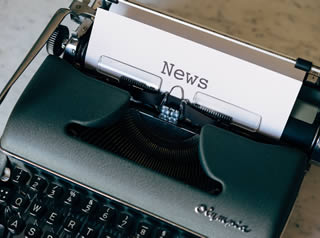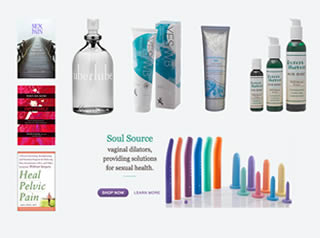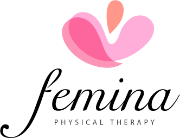
The Femina Physical Therapy Blog
Featuring original articles by our staff about current events and trends
Explore our insightful blog articles on pelvic health, where we delve into essential topics that empower and educate. From understanding pelvic floor disorders to strategies for conquering infertility, our content is designed for those seeking knowledge and support. We discuss the latest research, expert advice, and practical tips to enhance your well-being and foster a deeper connection to your body.
Featured From the Blog:
- Details
- 12409 Views

Are You Wondering "Can A Vaginal Birth Ruin Your Sex Life?"
Medically, the answer is a resounding ‘no’… but postpartum sex is still an understandable concern for most pregnant women, especially in a digital age where whispered rumors have given way to detailed stories of difficult birth experiences splashed across social media pages.
In the greater debate over vaginal birth vs. C-section, the real issue on the minds of many expectant mothers is often whether one mode of delivery is somehow better than the other. It’s a complex question; but a group of researchers in Ontario, Canada recently attempted to answer the ‘sex after baby’ part of it. What they found out surprised even them; and shed some important light on the bigger question as well.
Researchers Studying the Impact of Vaginal Childbirth versus Cesarean on Postpartum Sex Find...
Read more: Can A Vaginal Birth Ruin Your Sex Life? | Femina PT Talks...
- Details
- 3113 Views

Restless Legs Syndrome (or RLS)
Restless legs syndrome (or RLS) is a condition where there are uncontrollable urges to move limbs (mostly in the legs, but sometimes in the arms) that follows a circadian pattern, namely evenings/overnight when resting.
The urges usually come with unpleasant sensations such as tingling, burning, itching, or otherwise pain. Usually, it can be alleviated by movement, but as you can imagine, it can be debilitating and impair sleep, and thus the quality of life. It is common to experience mood swings, anxiety, and depression.
It is estimated that about 3.9-14.3% of the general population suffers from RLS. It is the most common movement disorder in pregnant women. There is either primary (idiopathic) RLS, or secondary (acquired) RLS due to pregnancy, renal pathologies, diabetes, hypertension, and other metabolic conditions. The two most common risk factors for RLS are iron deficiency and kidney disease.
Read more: Restless Legs Syndrome & Physical Therapy | Postpartum...
- Details
- 7751 Views

What is DRA?
Diastasis rectus abdominis (DRA, sometimes referred to as Diastasis Recti) is a distortion or thinning of the linea alba which is the midline of the abdomen that connects left and right rectus abdominis muscles together.
Although DRA can be found in both genders, it is more commonly found in females, and more common during pregnancy (66-100% of women have DRA during their third trimester) and can persist through their postpartum periods. About 33% of women continue to have a DRA a year postpartum. It can look like a gap in the midline, “doming” in the midline, or it can even appear as a “pooch,” in the lower abdomen.
Why Do We Care?
The abdominal muscles and linea alba assist in trunk movement, posture, lumbopelvic stability, breathing, and abdominal organ support. As you can imagine, it can affect those functions when a DRA is present. As movement specialists, we want to make sure you are engaging the muscles and tensing up the fascia of the linea alba appropriately to help prevent low back pain, pelvic girdle pain, and activity-related injuries.
Read more: Diastasis Rectus Abdominis: What, Why, How? | Postpartum...
- Details
- 5716 Views

Safely Returning to Activity and Sport Postpartum
Postpartum Recovery Part 1
Most women get the clearance after their 6 week check-up for sex and exercise, YAY! But, really? How? What does that mean? There are no guidelines on how to return to activity in a safe, leak-free and pain-free manner.
Between 6 and 31% of postpartum women experience urinary incontinence. In addition, 66% of those who experience urinary incontinence during pregnancy and/or their first 3 months of postpartum continued to experience incontinence even at 12 years after birth! As you can see, it may be common, but it is certainly not normal!
Read more: Safely Returning to Activity and Sport | Postpartum...
- Details
- 8575 Views

Physical therapy can help women across their lifespan. This includes support with orthopedic considerations related to breastfeeding, as well as other breastfeeding care with clogged milked ducts and noninfectious mastitis.
Symptoms & Causes of Clogged Milk Ducts and Mastitis
Breastfeeding can be a joyous time for some, but unfortunately it can be painful for others. Clogged milk ducts can be extremely uncomfortable and painful. It often arises due to not being able to drain fully, causing a back-up of milk along the mammillary ducts. It can occur when feeding sessions are interrupted or skipped, as well as when mom is under stress. One may experience symptoms such as a painful lump in the breast tissue, pain during breastfeeding that subsides after, and/or decreased milk supply from the blockage. Sometimes if unresolved, it can lead to mastitis, or infection of the breast tissue. Monitor for symptoms such as fever, swelling of breast tissue, redness of breast tissue, and escalation of pain/breast tenderness. If you start to experience these aforementioned symptoms, give your doctor a call as soon as possible.
Read more: How Physical Therapy Can Help with Clogged Milk Ducts and...
- Details
- 7170 Views

Third Stage of Childbirth: Delivery of the Placenta
You made it!
Now, at this point you have delivered your baby and your body’s hormones have shifted tremendously! You may feel overwhelming emotions of joy and exhaustion at the same time. Oxytocin, the bonding hormone, rises sharply to compensate for the drastic drop in estrogen and progesterone. You may find yourself shivering, and this is normal immediately post-giving birth and can last up to one hour.
Delivery of the Placenta
Read more: Vaginal Childbirth Positioning Series | Part 3: Delivery...
- Details
- 8337 Views

Postpartum Pelvic Health Recovery Should Start Day 1.
Here are some tips to help you get your postpartum pelvic health (and general health) back on track:
This article focuses on 5 key techniques you can use to improve postpartum pelvic health. It covers diaphragmatic breathing to activate core muscles and kickstart lymphatic drainage, pelvic floor muscle coordination, posture, and the benefits of a pelvic floor evaluation by a physical therapist to begin improving postpartum pelvic health on day 1. It also provides detailed instructions and references scientific studies to provide further research.
Read more: 5 Things You Can do to Improve Postpartum Pelvic Health












